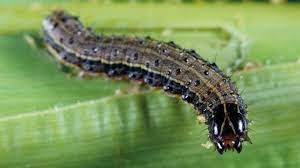“As 811 million people go to bed hungry every night, the number of those facing acute food insecurity has more than doubled – from 135 million to 276 million – since 2019. A total of 44 million people in 38 countries are teetering on the edge of famine,” World Food Programme.
It’s a sigh of relief for most farmers in the country, as the rainy season is finally upon us. The last couple of years have not been too favourable for them from dealing with locust invasion, poor and irregular rainfall, and costly fertilizers among other challenges. This has posed a big challenge when it comes to food shortages leading to food insecurity in the country. The new challenge farmers are posed with is arm worm invasion, what challenges does it pose to our food security?
“In recent years, invasion of armyworm has become one of the most damaging invasive species in Kenya, posing a significant threat to food security and livelihoods of many households. The Armyworm is a polyphagous pest that can feed on over 300 different plant species, including important staple crops such as maize, rice, sorghum, wheat, as well as forage grasses for livestock, it is particularly causing serious damage to maize which is a major food security crop in the major regions”, Hezron Obado Suba Environmental Education of Kenya (SEEK).
There seems to be a deeper challenge than just Army Worm Invasion in the quest to solve food insecurity, “Apart from the invasion of Armyworm as our subject, there are insects and diseases that are a threat to achieving the Kenyan sustainable development goals. They reduce crop and livestock production; threaten biodiversity and water quality; adversely affect aquatic animals, tourism and electrical systems; and cause desertification and health problems, among other impacts,” He further stated.
There is always a solution to every problem we face and here are some tips you can use to control the armyworms in your farms or areas as explained by our expert Hezron Obado, from Suba Environmental Education of Kenya (SEEK):
- Maintain fields weed-free, and follow balanced fertilizer application.
- Plan for maximizing plant diversity by intercropping maize with suitable pulse crops of a particular region. E.g. Maize and green gram.
- Plant Napier grass in the border rows to act as a Fall of Army Warm trap crop.
- Most commonly used control method is the application of pesticides such as lambda-cyhalothrin, carbaryl, and emamectin benzoate
- Handpicking of egg masses and larvae.
- Other control options include pouring ash or sand into maize whorls, rouging, and the application of detergent.







